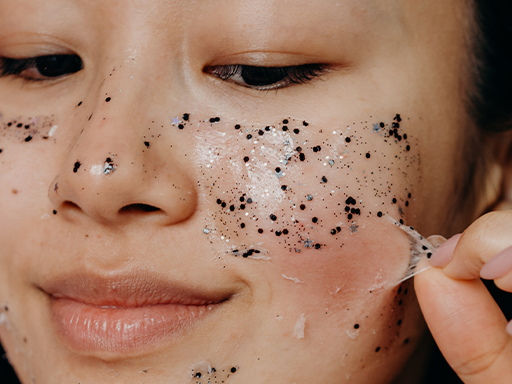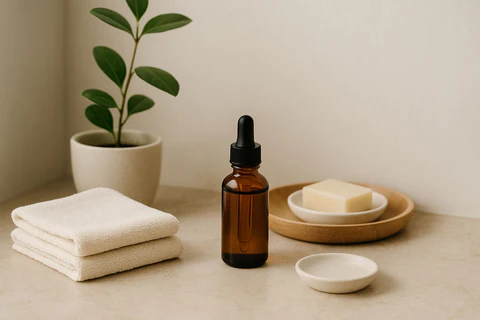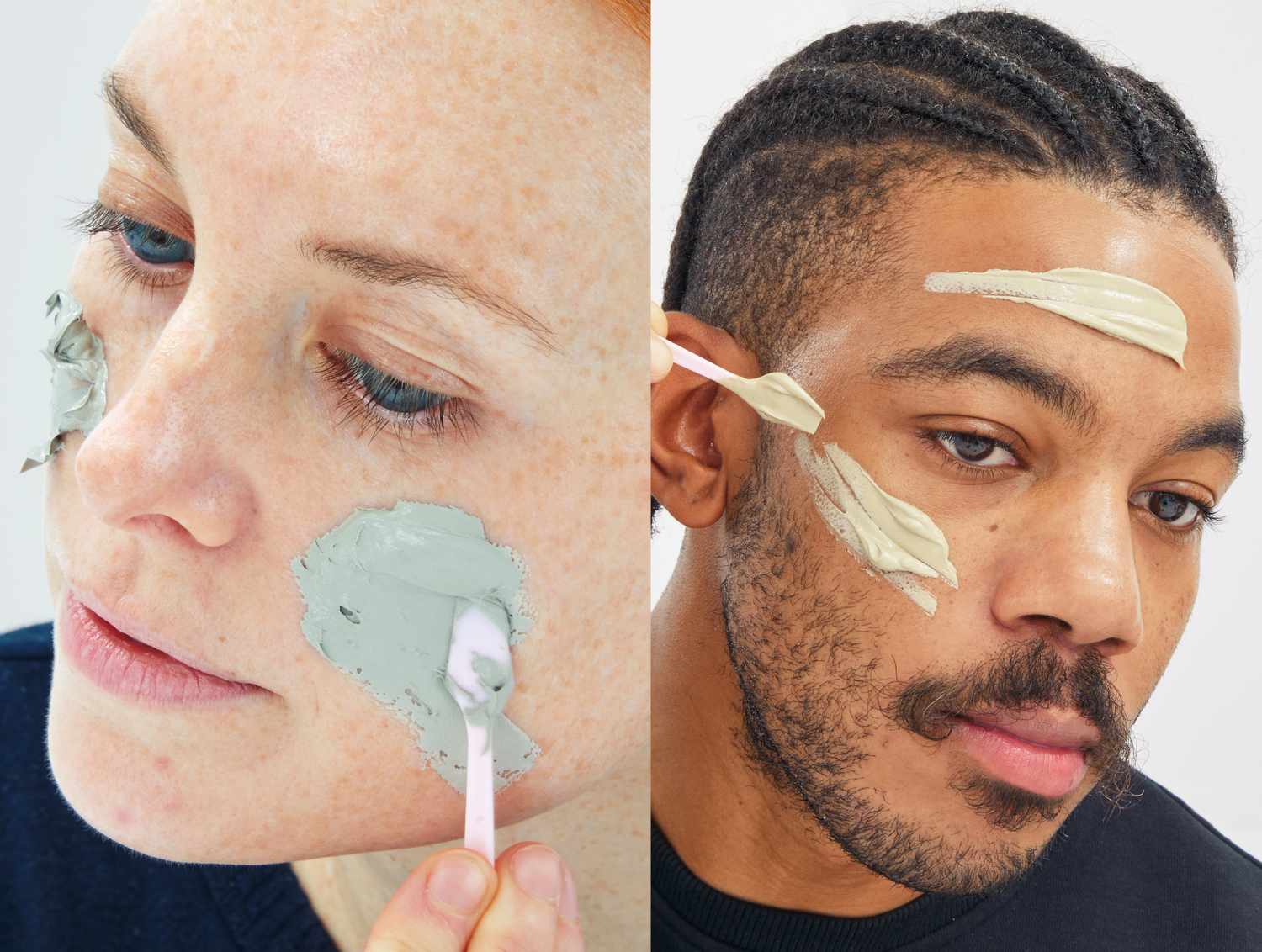Men with oily skin often deal with persistent shine, enlarged pores, and frequent breakouts. While the skincare market is flooded with complex routines and a wide variety of products, the truth is: keeping it simple is usually the best approach. A minimalist yet effective skincare routine can help control oil production, reduce acne, and promote a clearer, more balanced complexion.
This guide provides a straightforward, step-by-step skincare regimen specifically tailored for men with oily skin, using easy-to-follow practices and targeted product recommendations.
Understanding Oily Skin
Oily skin occurs when sebaceous glands produce too much sebum, a natural oil that helps keep the skin moisturized. While sebum is essential for healthy skin, excess oil can clog pores, lead to acne, and create a shiny or greasy appearance.
Common signs of oily skin include:
- Persistent shine, especially on the forehead, nose, and chin (T-zone)
- Enlarged or visible pores
- Frequent blackheads and whiteheads
- Acne and breakouts
Oily skin is influenced by several factors including genetics, diet, stress, climate, and skincare habits.
Key Skincare Principles for Oily Skin
To manage oily skin effectively, focus on:
- Cleansing without stripping: Harsh cleansers can backfire by causing your skin to produce even more oil.
- Hydrating appropriately: Oily skin still needs moisture—just in the right form.
- Exfoliating regularly: This helps keep pores clear.
- Protecting the skin barrier: Use non-comedogenic products that support overall skin health.
Simple Skincare Routine for Men with Oily Skin
This uncomplicated routine requires just a few minutes each day and focuses on core skincare steps.
Step 1: Cleanser (Twice Daily)
Use a gentle foaming cleanser formulated for oily skin to remove excess oil and dirt without over-drying.
Look for:
- Salicylic acid
- Tea tree oil
- Niacinamide
- Activated charcoal
Avoid bar soaps or harsh face washes with alcohol, which can irritate and strip the skin.
Step 2: Toner (Optional but Helpful)
A toner can help minimize pores and remove residual oil. Choose an alcohol-free formula to avoid irritation.
Ingredients to consider:
- Witch hazel
- Green tea extract
- Niacinamide
Step 3: Lightweight Moisturizer
Contrary to popular belief, oily skin still needs moisturizing. Skipping this step can trigger more oil production as your skin tries to compensate.
Best choices for oily skin:
- Gel-based moisturizers
- Oil-free formulas
- Ingredients like hyaluronic acid or aloe vera
Step 4: Sunscreen (Morning)
Sun protection is essential even for oily or acne-prone skin. Choose a matte finish SPF or a gel-based sunscreen that won’t clog pores.
Recommended SPF types:
- Mineral-based (zinc oxide or titanium dioxide)
- Non-comedogenic formulas
- Oil-control or mattifying products
Step 5: Exfoliation (2-3 Times Weekly)
Exfoliate to remove dead skin cells and help prevent clogged pores. Stick to chemical exfoliants like BHA (salicylic acid), which are ideal for oily skin.
Avoid rough physical scrubs that can cause microtears and lead to increased oil production.
Sample Daily Routine Table
| Time | Step | Product Type |
|---|---|---|
| Morning | Cleanser | Foaming or gel cleanser |
| Morning | Moisturizer | Lightweight, oil-free |
| Morning | Sunscreen | Matte finish, SPF 30+ |
| Evening | Cleanser | Same as morning |
| Evening | Moisturizer | Same or slightly richer if needed |
| 2-3x/week | Exfoliant | BHA (e.g., salicylic acid) |
Common Mistakes Men Make with Oily Skin
- Over-washing – Cleansing too often can dehydrate the skin and worsen oiliness.
- Skipping moisturizer – Moisturizer keeps skin balanced and healthy.
- Using body soap on the face – These soaps are too harsh and can irritate facial skin.
- Not using SPF – Sun damage can make oily skin worse and cause premature aging.
- Popping pimples – This can lead to scarring and further breakouts.
Lifestyle Tips to Help Control Oily Skin
- Stay hydrated: Drinking plenty of water helps regulate oil production.
- Eat a balanced diet: Reduce sugar and processed foods; increase intake of fruits, vegetables, and omega-3 fats.
- Manage stress: High cortisol levels can increase oil production.
- Clean your pillowcases regularly: Oils and bacteria can transfer from fabrics to your skin.
Also, certain natural remedies can support skin health. Some men explore natural ways to tighten loose skin on face, which can complement an oil-control routine, especially for those with mature or previously acne-prone skin that’s lost elasticity over time.
Best Ingredients for Oily Skin
| Ingredient | Benefit |
|---|---|
| Salicylic Acid | Deeply cleans pores and reduces breakouts |
| Niacinamide | Balances oil production and brightens skin |
| Zinc | Controls sebum and calms inflammation |
| Hyaluronic Acid | Hydrates without clogging pores |
| Aloe Vera | Soothes and moisturizes skin naturally |
FAQs
Q1: How often should men with oily skin wash their face?
Twice a day—morning and night—is ideal. Washing more frequently may strip the skin and cause rebound oil production.
Q2: Should I use toner if I have oily skin?
Yes, but choose an alcohol-free toner. Toners with ingredients like witch hazel or niacinamide help tighten pores and reduce oil.
Q3: Can I skip moisturizer if my skin is oily?
No. Even oily skin needs hydration. Use a lightweight, non-comedogenic moisturizer to maintain skin balance.
Q4: Is sunscreen necessary for oily skin?
Absolutely. Look for oil-free, mattifying sunscreens that won’t cause breakouts.
Q5: Can oily skin benefit from facial oils?
Certain lightweight oils like jojoba can mimic natural sebum and help regulate oil production, but they should be used sparingly and with caution.
Conclusion
Oily skin doesn’t need a complex routine—just a consistent and balanced one. By choosing the right products and focusing on hydration, oil control, and protection, men can manage oily skin effectively without overcomplicating their regimen. Incorporating simple habits, avoiding harsh products, and staying consistent will yield clear, healthy skin over time.
Remember: oily skin can be an advantage. It often ages more slowly and stays supple longer. With the right approach, you can keep it under control and looking its best.











